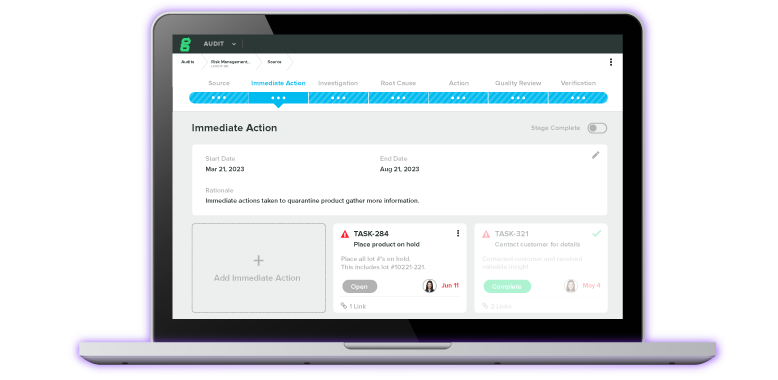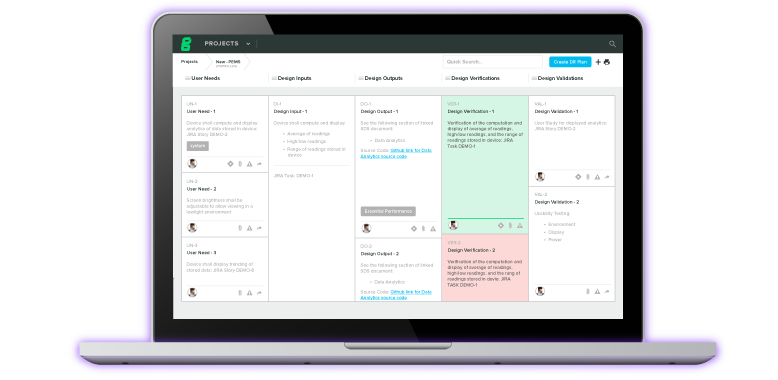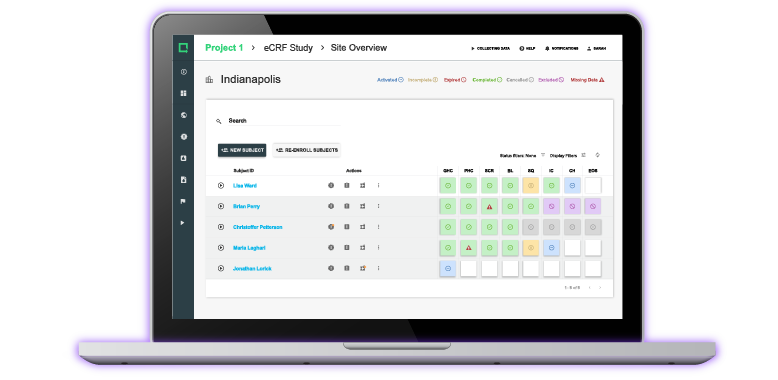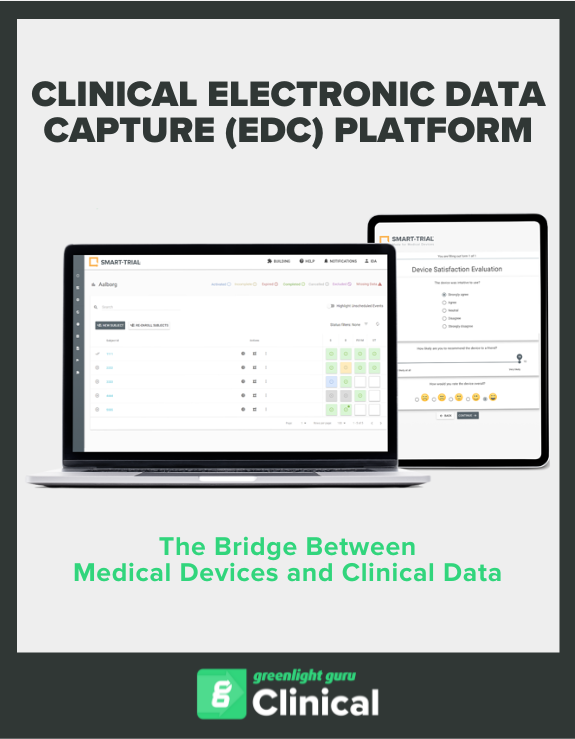How to use the Greenlight Guru Clinical AE/SAE reporting module
.png)
This blog post highlights the ready-to-use Greenlight Guru Clinical module for Adverse Events (AE) and Serious Adverse Events (SAE). Let’s dive into how the reporting module benefits clinical studies and facilitates high-quality clinical data collection.
The AE & SAE Reporting Landscape
Prior to the use of Electronic Data Capture (EDC), most data collection methods included complex paper-based forms. Coupled with the lack of communication and poor resources the process proved inefficient and time-consuming.
One of the barriers in Adverse E reporting is the disconnect between the moment an AE occurs to its reporting. Especially when using outdated methods of data collection that do not allow for good communication between the involved parties.
However, with the widespread adoption of EDC systems and its continuous development, the MedTech industry stands to benefit. EDC software helps comply with regulations and maintain structured quality and safety reports for products on the market.
Why should you use the AE/SAE reporting module?
-
Traditional EDC solutions require the user to create an AE/SAE as a separate eCRF or form. In Greenlight Guru Clinical you can take advantage of our ready-to-use AE form templates and use the AE/SAE module directly, which significantly reduces overall EDC setup time.
-
You eliminate duplicate documentation as all the data collected is stored in one location. Both investigator and sponsor have access to the AE/SAE report in real time which improves AE oversight and communication.
-
Automatic notifications via email and within Greenlight Guru Clinical, helps to keep users informed of when a new SAE is reported, or when the investigator or sponsor should take action.
-
A complete overview of the progress of individual reports, which benefits the users by reducing the workload and stress. Not having to search for paper-based reports, or checking on site-staff to get an overview of AE/SAE status saves time.
-
Semi-automated AE/SAE form fill-out. Based on the answers selected, only relevant fields will be shown or auto completed with subject information that’s available from within Greenlight Guru Clinical. This helps to eliminate the human errors involved when using e.g. paper.
-
All changes/edits on the AE/SAE reports are recorded in Audit log and Change log.
-
Customizable setup. The Adverse event module in Greenlight Guru Clinical can be customized to suit your study by adding, editing, or deleting questions to make the form fit your protocol.
-
Determine the sponsor involvement. Choose if you would like to involve the sponsor in all AE/SAE reports, to only involve sponsors on SAE’s, or to never involve the sponsor.
The benefits are without a doubt a massive improvement compared to current paper-based standards.
How does the Adverse Events Module work?
In Greenlight Guru Clinical there are five stages that all AE/SAE reports follow, i.e. Event reported, Investigator Assessment, Sponsor Classification, Followed up, and Sponsor Sign off.

During Event Reporting, a user creates a new AE/SAE report, which includes all of the general information of the event. This is usually information that clarifies date of awareness, if it’s serious or normal AE, description of the event etc.
Investigator Assessment refers to fields in the AE/SAE report that are filled out by the investigator. These fields involve classification of the intensity and the relationship of the AE/SAE to the procedure and the device.
Sponsor Classification is the classification made by the sponsor of the study. Like the investigator, the sponsor will classify the intensity and relationship to the procedure and device. Further, the sponsor will also determine if the AE/SAE is anticipated, classify the event (AE, SAE, ADE, ASADE, or USADE), and provide information about the current location of the device.
Followed up is the stage of every report, where a user has to complete the report, by following up with the subject on the potential outcome of the event. This usually includes information such as outcome results and end-date.
Sponsor Sign off is the last step in reporting AE/SAE’s and involves that the sponsor signs off with their name that all information in the report is provided correctly and this concludes the AE/SAE flow.

In addition to being able to collect the standard AE/SAE information, you can also link events with concomitant medications from the Greenlight Guru Clinical medication module. The same goes for unscheduled events e.g. if the AE is linked to a protocol deviation or device deficiency. This provides an even better overview of the subject's progress in the study.
Interoperability of EDC with AE/SAE reporting
Conclusively, when evaluating EDC solutions for clinical studies, one often forgets to evaluate the interoperability of the EDC system with AE/SAE reporting.
But with Greenlight Guru Clinical’s user-focused design, that makes full use of its EDC capabilities, you can increase data quality and overall efficiency of your AE/SAE reporting process, both for clinical studies and post-market surveillance.
With the ready-to-use AE/SAE module, you not only minimize the setup time of your EDC system, but you also gain added functionality which offers a more streamlined progress tracking of your AE/SAE reporting.
Get a free demo and see this module in action!
Páll Jóhannesson, M.Sc. in Medical Market Access, is the founder and Managing Director of Greenlight Guru Clinical (formerly SMART-TRIAL). Páll was previously the CEO of Greenlight Guru Clinical where he led the team to create the only EDC specifically made for medical devices.










